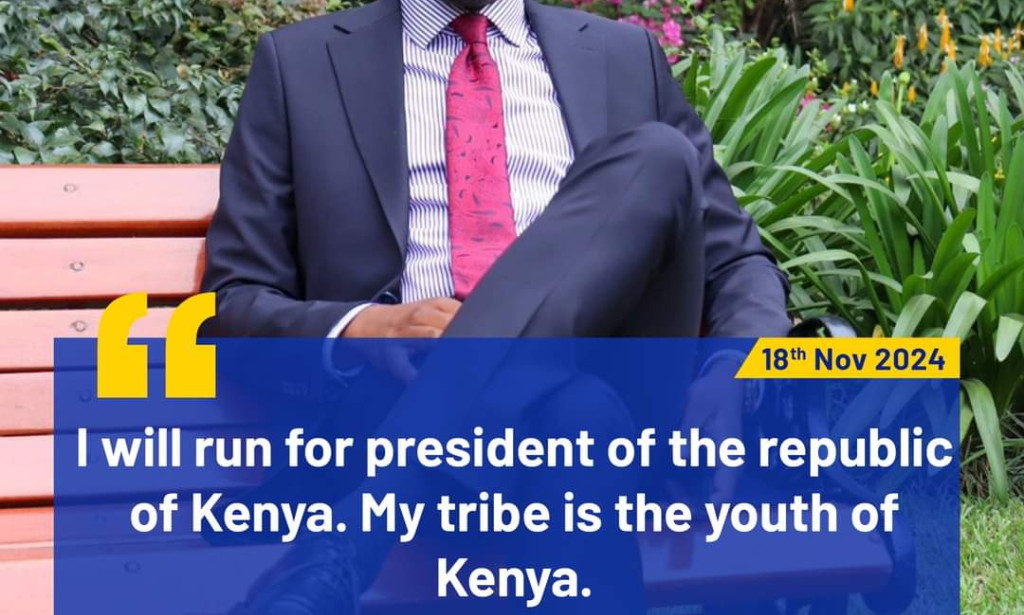Tren in Politics: The Dynamics of Political Movements by Morara Kebaso
In his insightful analysis, Morara Kebaso addresses the concept of “tren” in politics, a term he uses to describe the shifting, often unpredictable, nature of political movements and the forces that drive them. The word “tren” itself is derived from “trend,” but Kebaso elevates it to encompass the complexities of political trajectories, particularly in the African context. In this article, we will explore the core arguments put forth by Kebaso and the implications of his ideas on contemporary political landscapes.
The Evolution of Political Trends
Kebaso begins by acknowledging that political trends are not merely cyclical but are influenced by an array of factors, including social, economic, technological, and cultural dynamics. In African politics, for instance, the post-colonial era saw a surge of nationalist movements that were deeply influenced by the desire for independence and self-determination. However, as time passed, the once popular political trends such as socialism and democracy often evolved or were replaced by new movements in response to changing circumstances.
Kebaso argues that political movements are not static; they are fluid, and they respond to the needs and frustrations of the masses. For instance, the rise of populist movements in many parts of Africa and the world is an expression of the disillusionment with traditional political elites who have failed to deliver on their promises of progress and development.
The Role of Youth and Technology in Shaping Political Tren
One of the most crucial factors driving political trends in today’s world is the increasing involvement of young people in political processes. Kebaso highlights the role of youth movements, particularly in the context of social media and digital activism. He points out that the ability of youth to mobilize through platforms like Twitter, Facebook, and Instagram has completely reshaped the political landscape, particularly during moments of crisis.
For example, movements such as the #EndSARS protests in Nigeria or the Arab Spring in the Middle East were largely driven by youth who were disillusioned with the status quo. Social media allowed these movements to organize, communicate, and spread their message rapidly, bypassing traditional media channels that were often controlled by state authorities or political elites.
Kebaso argues that this digital revolution has given rise to a new kind of political tren — one that is fast-moving, decentralized, and increasingly difficult for traditional political structures to control. Young people, equipped with smartphones and an unwavering desire for change, have become powerful agents of political transformation.
Political Opportunism and Shifting Alliances
Another key aspect of the “tren” in politics that Kebaso explores is the phenomenon of political opportunism and shifting alliances. In many African countries, politics is often characterized by a fluidity of loyalties, where politicians and parties frequently switch allegiances depending on what is politically advantageous at any given moment.
Kebaso highlights how this opportunism can create volatile political environments. Leaders who once championed one ideology may suddenly abandon it in favor of another to retain power or influence. This trend is evident in the shifting party allegiances, coalition governments, and alliances that often define African politics.
While some may view this as a sign of political instability, Kebaso contends that it reflects the adaptability of political actors to an ever-changing environment. In a continent where development is often tied to the whims of external actors, economic pressures, and global trends, politicians are compelled to adjust their strategies to navigate the turbulent political waters.
The Future of Political Tren
Looking ahead, Kebaso suggests that the future of political trends will be shaped by several key factors. First, the ongoing globalization and the influence of international institutions will continue to exert pressure on national politics. Global trends such as climate change, migration, and economic inequality will likely become even more central in political discourse.
Second, the rise of non-state actors, including civil society organizations, advocacy groups, and multinational corporations, will play an increasingly important role in shaping political trends. These actors often push for policies that go beyond national borders, making local politics more interconnected with global concerns.
Finally, Kebaso underscores the importance of institutional reform in ensuring that political trends do not degenerate into mere populist movements. While youth engagement and digital activism are important, they must be coupled with strong democratic institutions that can manage the complexities of modern governance.
Conclusion
Morara Kebaso’s exploration of the “tren” in politics offers valuable insights into the ever-evolving nature of political movements and the forces that shape them. From the role of technology in mobilizing youth to the fluidity of political alliances, Kebaso highlights the dynamic nature of political life, particularly in the African context. As the world continues to grapple with issues such as economic inequality, climate change, and social justice, political trends will undoubtedly continue to evolve, driven by new actors, new ideas, and new technologies.

You must be logged in to post a comment.